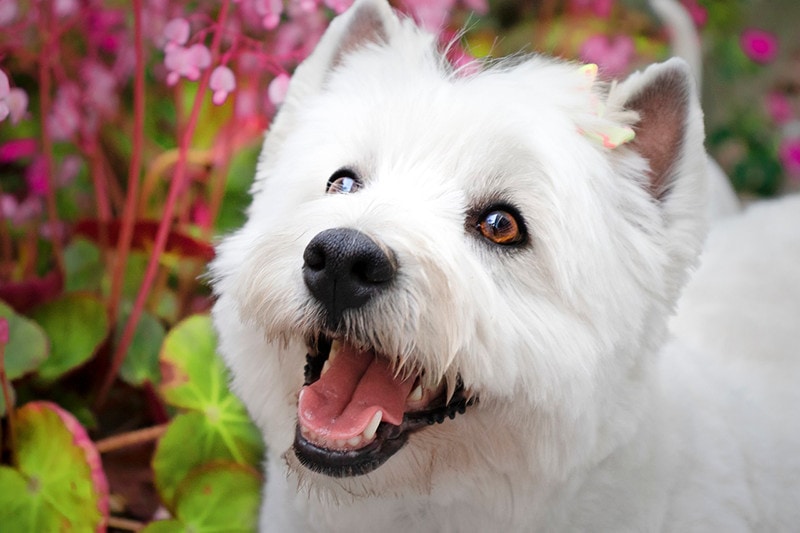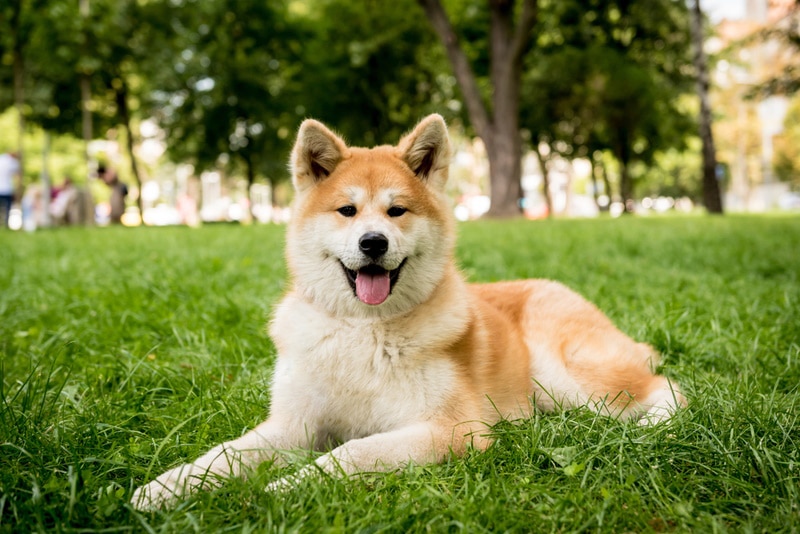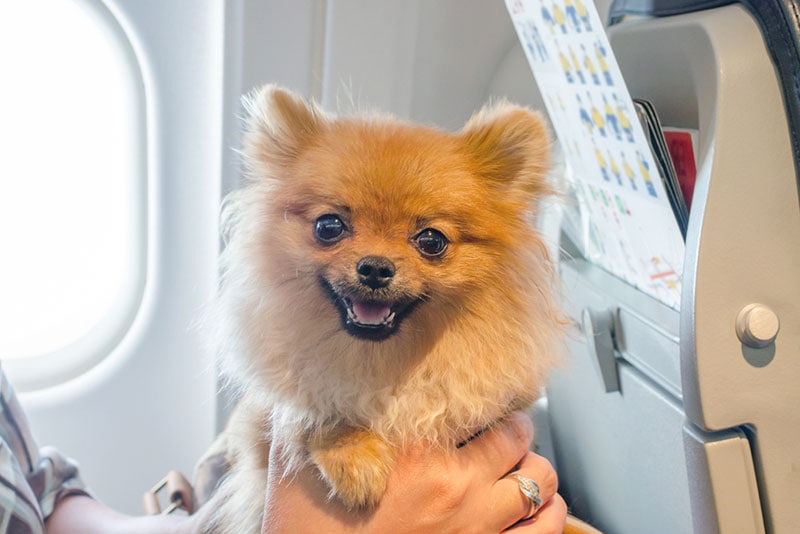Are Westies Good With Cats? 5 Introduction Tips

Updated on

From their upright tail and erect ears to their energetic personalities, Westies embody perkiness inside and out. Their plucky disposition shows no discrimination. A West Highland White Terrier is a joy for everyone, an excellent household addition that can happily coexist with adults, children, dogs, and even cats.
With their friendly personalities, Westies can lull you into thinking they’re plug-and-play pets that will immediately fit any family dynamic. While generally outgoing, you may have a few tendencies to overcome to make everybody comfortable and content in the home.
Are you worried about whether your Westie will be good with a cat? Here’s everything you need to know about keeping the peace between your pets.
Are Westies Good with Cats?
The West Highland White Terrier is affectionate and charming, which is an excellent match for various personalities and a fun playmate for kids. Though their stubborn, bold character makes them challenging to train, they’re also confident and sociable with people and pets, particularly dogs and cats. They’re open to strangers and adaptable, making a changing household easier to bear.
Westies also have some traits that may not immediately mesh with another animal in the house. Though they flourish with other dogs that can supply entertainment and attention, de-sexing is crucial to avoid conflict and unwanted behaviors.
With a rat-catching background, they can also present potential problems with smaller animals. Excitable, unafraid, and independent, a determined Westie won’t hesitate to engage a cat in undesirable ways without firm guidance.

Westies with Smaller Cats & Pets
Like many other Terriers, West Highland White Terriers had an original role as independent vermin catchers. They were bred to chase anything small and do so with little nudging. Westies never needed the precise direction of a herder or other working dog, and it shows in their difficulty falling in line. Fortunately, although they base their approach to commands more around a “What’s in it for me?” perspective than an eagerness to please, they are still loyal and intelligent, which you can leverage during training.
The other side of that rat-catching background is an inherent compulsion to chase. Westies have a high prey drive. They don’t pair well with free-roaming smaller animals in the house, like hamsters or rabbits, and they may also pursue cats.
Much depends on the individual and the environment. For instance, some cat breeds, like Maine Coons or Ragdoll, have reputations for getting along better with other pets. Age and ownership history also play a role, as older and unsocialized Westies will have a rougher time adjusting to new animals.
The 5 Tips for Keeping a Positive Relationship Between Westies & Cats
West Highland White Terriers aren’t an enormous physical threat to cats, and you can often work out any early uncertainty and aggression with the proper outlook. Supervision is necessary while they’re together, but eventually, your cat and Westie can become great friends. Follow these tips for a successful relationship.

1. Early, Gradual, Owner-Led Introductions
The best methods for forging a desirable relationship between your Westie and cat involve early, slow introductions. Puppies under 12 weeks old have the most success adapting and bonding to a cat.
Gradual introductions allow the pets to habituate. Controlled interactions are critical to quelling over-exuberant attempts to engage your cat, especially with a lively breed like a Westie. Scent-swapping over several days while keeping the two apart will help them become comfortable with the other’s presence, and when it’s time to introduce them, you can keep the dog on a long lead.
Maintain the lead during interactions. Owners have the most success bringing animals together when they mediate the interactions. The pets should have enough slack for them to work out their issues, but you must be ready to correct or remove them if they get overly aggressive.
2. Maintain Separate Spaces
While acclimating your Westie and cat, setting up their separate spaces will reduce frustration and agitation during the process. You don’t want to lock your dog in the crate while your cat dances freely around them. Give your pets separate spaces with enrichment activities and devices to keep them content and stimulated while you aren’t around.

3. Reward with Treats
Positive reinforcement and purposeful punishments can train out your Westie’s urge to chase. Treats are essential for a food-motivated dog as a reward for good behavior during interactions and as a training tool while exchanging scents. With an excited dog trying to get to a cat in another room, you can redirect their behavior toward the treats, slowly teaching them to lose interest in the cat.
4. Train Early
Ingrain commands like “sit” and “come” before introducing your cat to your Westie in a face-to-face meeting. Establishing boundaries and a clear leadership position with your dog will make them easier to manage and redirect. Aim for your Westie to have several weeks of training before pairing them with a cat.
5. Keep Toys and Activities Handy
Cats and dogs need ample activities in their separate spaces to stave off boredom and destructive habits. Your cats should have toys and trees for an as-needed escape from the dog. Meanwhile, your Westie should have separate toys to keep them disinterested in your cat and avoid chewing and clawing behaviors. Toys also serve as a helpful distraction if you notice your dog getting overly playful or aggressive with your cat.

Can Westies Be Aggressive?
Westies can be aggressive or at least show signs of aggression. They are profuse barkers and easily excitable, a desirable trait for a watchdog. On the other hand, it can also make them tiny terrors in busy apartment buildings and a stressor for your cat. Despite the bark, they’re rarely physically aggressive unless they feel threatened or have poor training and social skills.
Corrective behavior and positive reinforcement starting at a young age are crucial in developing concrete behaviors your Westie will carry into adulthood. When you pair them with your cat, you should remove the sources of conflict. Dog food and water dishes should be off-limits to your cat, and your dog shouldn’t have access to the litter box. Preventing the potential for acrimony will ensure your pets only build positive associations with one another.

 Conclusion
Conclusion
A West Highland White Terrier supplies endless love and affection, which they’ll readily offer to anybody in the home. But while they’re eager to engage family and fellow pets, their excitability needs attention for a successful relationship with a cat. Cats may not respond well to their lively new housemate, and your Westie will love to chase without training or proper introductions. Consider the Westie-cat relationship before adopting your next pet, and follow these tips for a happier household.
Featured Image Credit: Patrick Hatt, Shutterstock










